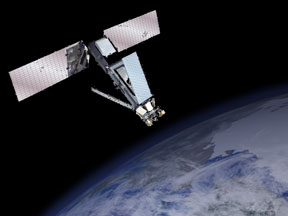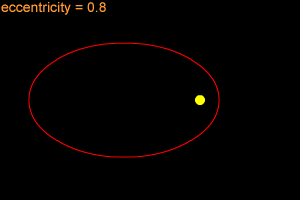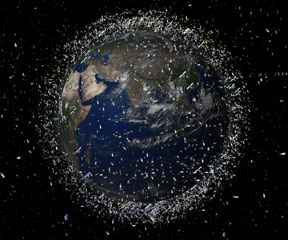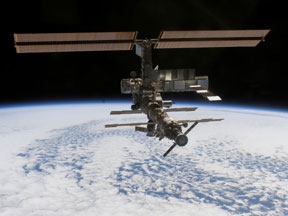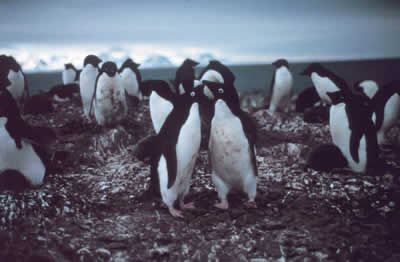Click on image for full size
Original artwork by Windows to the Universe staff (Randy Russell) using images courtesy of Iridium Satellite LLC and NASA.
Satellites Collide in Earth Orbit!
News story originally written on February 13, 2009
On February 10, 2009, two satellites in Earth orbit collided and were destroyed. This was the first major collision between satellites in Earth orbit ever.
The satellites were about 776 km (482 miles) above Siberia when they hit each other. Scientists estimate they were moving at a speed of about 11.6 km per second (26,000 mph) relative to each other when they hit. The collision scattered a huge cloud of debris or "space junk". The debris, moving at very high speeds, is extremely dangerous to other spacecraft and astronauts. Several satellite operators are concerned for the safety of their vehicles. There is some chance the debris might reach the Hubble Space Telescope. NASA thinks the International Space Station is relatively safe because it orbits at a lower altitude (~354 km or 220 miles).
The two spacecraft involved in the collision were an Iridium communications satellite and a Russian Kosmos military satellite. The 950-kilogram (2,094 lb) Kosmos satellite, launched in 1993, had been out of use and essentially "dead" since 1995. The 560-kg (1,235 lb) Iridium satellite, launched in 1997, was operational up until the time of the crash. Iridium's "constellation" of 66 communications satellites includes spares or backups on-orbit; the company is moving one of those to cover the gap created by the destruction of their spacecraft.


